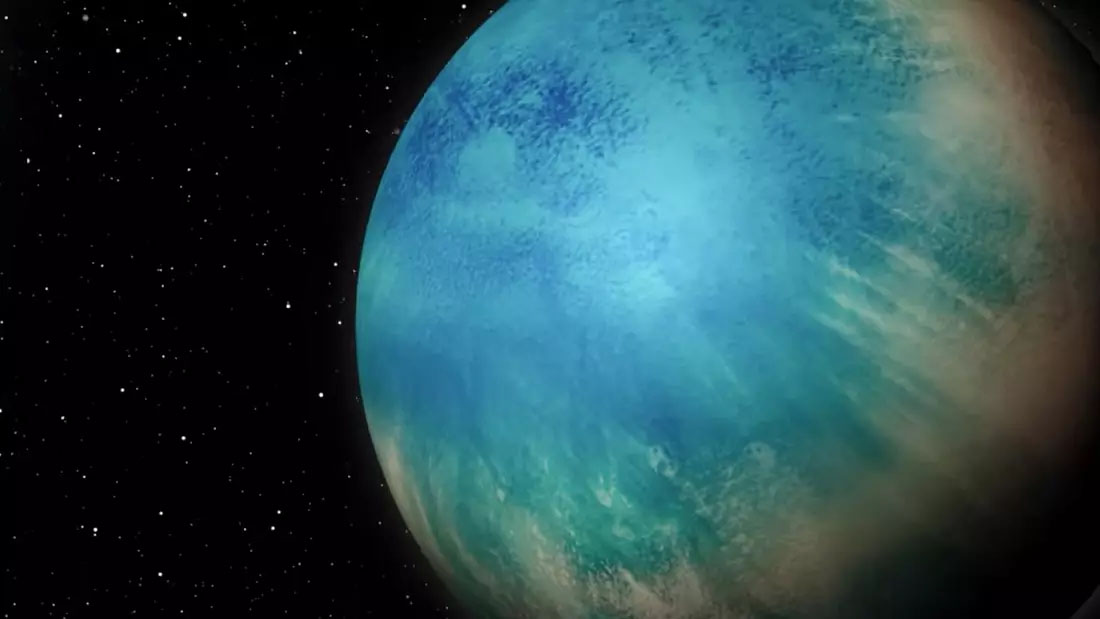| Sep 17, 2022 |
Scientists discover super-Earth likely covered in water
|
|
(Nanowerk News) An international team of researchers supported in part by the EU-funded NewWorlds and SACCRED projects has discovered a planet outside our solar system that is believed to be an ocean planet. Called TOI-1452 b, the exoplanet is slightly bigger in size and mass than Earth.
|
|
The research is described in The Astronomical Journal ("TOI-1452 b: SPIRou and TESS Reveal a Super-Earth in a Temperate Orbit Transiting an M4 Dwarf").
|
 |
| Artistic rendition of the exoplanet TOI-1452 b. (Image: Benoit Gougeon, Université de Montréal)
|
|
The super-Earth, a name given to exoplanets with a mass higher than Earth’s but lower than that of ice giants like Neptune, orbits an M dwarf some 99.5 light years from Earth. Much smaller than our Sun, the dwarf star – called TOI-1452 – is one of two small stars in a binary system found in the Draco constellation.
|
|
TOI-1452 b takes just 11 days to orbit the M dwarf. Furthermore, it receives approximately twice as much radiation than the Earth, corresponding to a temperature of 52.85 ℃. The distance between the exoplanet and its star indicates that its temperature is neither too hot nor too cold to prevent the existence of liquid water on its surface. This suggests that the super-Earth could very well be an ocean planet completely covered in water.
|
|
The water world candidate was first detected by NASA’s Transiting Exoplanet Survey Satellite. It was then characterised through high-precision radial velocity measurements using the near-infrared SPIRou spectropolarimeter installed on the Canada-France-Hawaii Telescope in Hawaii.
|
|
“I’m extremely proud of this discovery because it shows the high calibre of our researchers and instrumentation,” states study co-author Prof. René Doyon of the Université de Montréal in Canada in an article posted on the university’s website, going on to describe TOI-1452 b as a “one-of-a-kind exoplanet.”
|
More watery than Earth
|
|
Unlike what the moniker blue planet suggests, less than 1 % of Earth’s mass is made up of water. In contrast, the density of some exoplanets points to a large percentage of their mass consisting of lighter materials than those found in Earth’s internal structure, meaning they most likely have a greater abundance of water.
|
|
“TOI-1452 b is one of the best candidates for an ocean planet that we have found to date,” remarks study lead author Charles Cadieux in the same article. “Its radius and mass suggest a much lower density than what one would expect for a planet that is basically made up of metal and rock, like Earth,” continues Cadieux, who is a PhD student at the Université de Montréal. An analysis by other team members has shown that water may make up as much as 30 % of the exoplanet’s mass.
|
|
TOI-1452 b is considered a prime candidate for future observation with the James Webb Space Telescope. Besides being close enough to Earth to facilitate the study of its atmosphere, it is also located in a part of the sky that the telescope is able to observe most of the year. “Our observations with the Webb Telescope will be essential to better understanding TOI-1452 b,” notes Prof. Doyon. “As soon as we can, we will book time on Webb to observe this strange and wonderful world.”
|
|
NewWorlds (Magnetic Fields and the Formation of New Worlds) is hosted by the French National Centre for Scientific Research and SACCRED (Structured ACCREtion Disks: initial conditions for planet formation in the time domain) by the Research Centre for Astronomy and Earth Sciences, Hungary. Both projects end in 2023.
|

